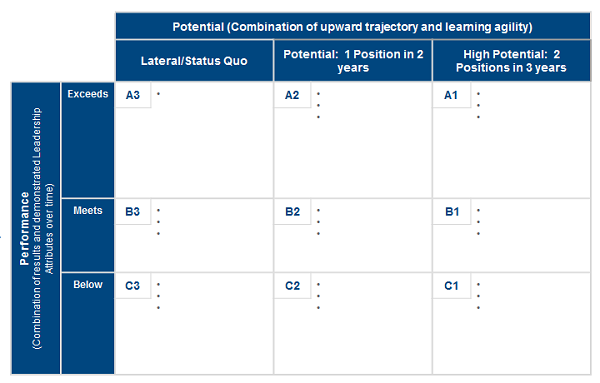ATD Blog
Using Talent Reviews as a Strategic Partner
Wed Feb 28 2018

Bookmark
My last post explored how to transform talent development from an order-taking function to a strategic partner that can help healthcare organizations. Case in point: by playing a key role during performance and talent reviews, the TD team at Parkland Health & Hospital System has been able to turn the focus from a transactional task completion to a robust conversation between leaders and employees about career interests, career progression and organizational support in a learning culture.
Indeed, talent reviews are gaining traction in healthcare organizations as a vital part of performance management and employee development. Talent reviews foster collaborative, transparent conversations among leaders about where their employees are in performance and potential for career movement and even progression. They seek to ensure we have the right people in the right roles doing the right work that aligns with our organizational strategy and goals. If done correctly, they improve employee career development, resulting in enhanced performance effectiveness and leadership succession bench.
Talent Review Components
Talent reviews typically include a nine-box assessment, a leadership succession chart, and a development plan chart. In the nine-box assessment (see figure below), leaders place their employees in one of the boxes. The rows assess performance, often using a recent mid-year or annual performance rating of Exceeds (top row), Meets (middle row), or Needs Improvement (bottom row).
The columns indicate the individual’s potential for advancement. The first column indicates no change or a lateral move. The middle column indicates promotion potential up one level within about two years. The right column indicates upward progression of two levels in three to four years. Those marked as exceeding expectations (top row) and moving up one level (middle column) or two levels (right column) are marked as “Potential” or “High Potential” employees.
Figure 1: Assessment Chart

Next, the Succession Bench Chart of each leadership role identifies employees might fill in during an emergency, who can be a permanent replacement immediately (Ready Now), and who can replace someone in one to two years. This chart clarifies a team’s leadership bench strength or potential instability due to limited succession. Limited bench strength requires an organization to hire externally and frustrates current employees who might not feel the organization invests in their development nor recognizes their value.
Figure 2: Leadership Succession Chart

The talent review cannot stop simply with assessing individuals. It must result in clear action items for how to develop employees in the skills needed to progress faster through the succession bench timeline. For that conversation, the review includes a Development Actions Chart, which states the individual’s strengths, opportunity areas, and development goals to enhance strengths and address gaps.
Figure 3. Development Actions Chart

TD’s Role in Talent Reviews
In some organizations, TD leaders facilitate talent reviews. In other groups, another HR leader facilitates. In either case, the TD leader needs to remain a strategic partner to ensure that the experiences needed include meaningful development plans.
For example, at Parkland, I piloted the talent review concept with a nursing division. We had a robust, respectful discussion with the nursing directors about their teams’ strengths, talent mobility, and development opportunities for individuals and the team. When we discussed the development experiences needed, I explained the 70-20-10 model and a blended learning approach to talent development instead of just assigning a training course or having individuals attend a conference. Had TD not been part of the discussion, the quality of the go-forward development plans would have been limited.
I also was able to facilitate toward positive discussions of individuals’ career interests, cross-functional projects, developmental stretch assignments, and formal training offered online or through our leadership programs. Furthermore, I listened for common development themes in order to connect someone on my team development on the specific opportunity areas discussed. This moved the discussion from just tactically completing a talent review assessment to a more strategic assessment and go-forward plan for developing talent—increasing employee morale and building leadership effectiveness at all levels.
The Way Forward
Most TD professionals entered the industry because they want to help people. Their frustration arises when they feel disrespected or under-appreciated by their cross-functional counterparts and then pigeonholed into being doormats instead of door openers. Talent development leaders have a professional obligation to elevate their influence beyond tactical leadership and into a strategic partnership role. By implementing TD solutions that are cross-functionally aligned on purpose, stakeholders and success criteria we champion change and foster innovation.
Deep down, cross-functional leaders want us to step up to the plate and partner collaboratively. Now is the time to rise up and lead with confidence and competence not only when it comes to TD projects, but also while influencing other areas strategically to impact our organization’s success.
More from ATD

